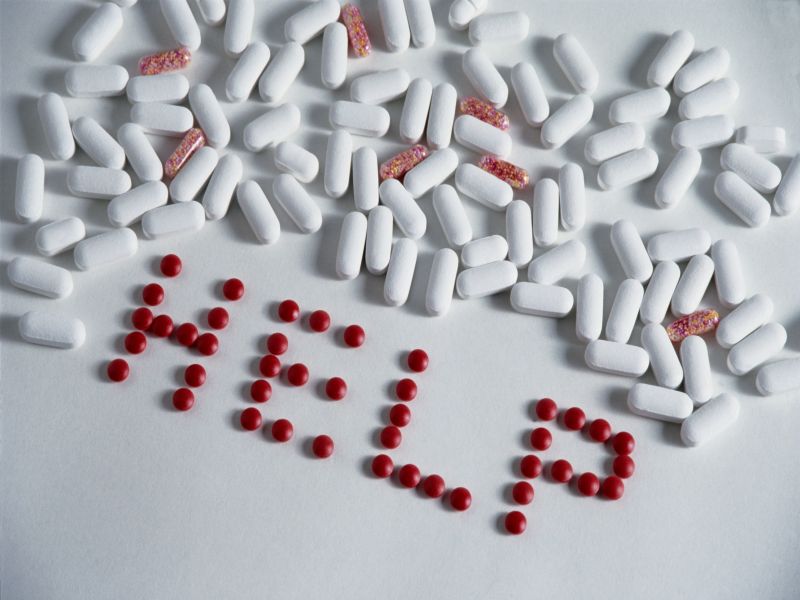
He was 26, a specialist fifth class with the U.S. Army, and stationed abroad, when an accident on the German autobahn sent him careening through the windshield of his car.
The now 60-year-old veteran prefers to withhold his name, but not his story, of a decades-long struggle against chronic back pain and an addiction to the opioid painkillers he’d hoped would help him.
“At first I was taking 50 milligrams [mg] of Percocet,” the Colorado resident recalled. “Every day I’d wake up in pain. And every day I’d automatically pop a pill right away and go back to work. I didn’t think anything of it — I’d just take Percocet in combination with hydrocodone [Vicodin], and it worked.”
However, “eventually it wasn’t working anymore,” he said. “I felt like I was putting a Band-Aid on a bullet wound, and I couldn’t stand the pain.”
Then, over time, there was a “gradual slide,” he said, to more pills and higher doses.
It’s a story shared by a growing number of Americans. The U.S. Centers for Disease Control and Prevention has called prescription opioid misuse and addiction a full-blown “epidemic.”
About 2 million Americans are now in the throes of prescription opioid abuse or dependence, the agency estimates, and more than 165,000 men and women died from a prescription opioid overdose between 1999 to 2014.
“I was going down a very slippery slope,” the veteran recounted. “It affected my mood, it affected my attitude, but I couldn’t function without them. By the time I was 10 years into it I was taking three to four pills a day.”
After an attempted suicide, followed by a month in a mental health facility, he decided he’d finally had enough. “I wanted to get off them. I wanted to turn my life around. So I stopped taking opioids,” he said. “I went cold turkey.”
But that’s when things went from bad to worse, he said. Without proper medical guidance or social support, that initial quit attempt failed.
None of this surprises addiction specialist Kelly Dunn, who researches the issue at Johns Hopkins University School of Medicine, in Baltimore.
“When you stop taking opioids it takes time for your body to regenerate its own ‘painkiller’ system,” she explained. “Generally, four to five days. The severity varies per patient, and it’s not predictable who will react how — but withdrawal is real.”
Opioid withdrawal is a highly disturbing experience, added another specialist, Dr. Joseph Frank, professor of medicine at the University of Colorado. He said withdrawal typically involves a deep malaise, severe pain, nausea, vomiting, diarrhea and abdominal cramps.
“Patients often don’t tell anyone, because they are worried they’ll be stigmatized for being addicted in the first place,” Dunn added. “Even if their problem arises from dependence on a medication they took exactly as prescribed. Some will just deal with it and get through, but some can’t tolerate it. So they go back to taking their meds, just to avoid the withdrawal.”
The veteran recalled: “I would curl up in a corner and just cry. I didn’t eat, I didn’t go to work, I lost my apartment, I lost my job. It was what I’ve heard heroin junkies go through when they try to quit cold turkey — I would equate it to that. You just withdraw into yourself, and then the mental problems start. You think that nobody cares, you think, ‘I would be better off dead.’ “
That story was repeated many times in a study Frank led recently that involved 24 Denver-based pain patients interviewed between 2014 and 2015.
Ranging in age from 31 to 73, most patients said their fear of pain’s return usually trumped any fear of addiction.
Many also worried that less addictive, non-opioid painkillers simply wouldn’t work. And for people who had tried to quit opioids but failed, withdrawal was so harrowing that it often kept them from trying again.
Still, success stories did occur. Reporting the study in a recent issue of Pain Medicine, Frank’s team said that a quarter of those interviewed had already discontinued their opioid use, while half were in the process of tapering off. A quarter were still taking opioids for chronic pain, however.
Typically, people who’d successfully kicked their addiction pointed to the support of family and friends as key. The help of other addicts — people who were on the same journey — helped, too, as did the guidance of a trusted doctor.
Today, the Colorado veteran says he is finally free of his addiction to opioid painkillers, but still not free of pain. “Now I only take 500 mg of aspirin, but it only controls about 10 percent of the pain,” he said. “So, I’ve had to learn to live with that. But I won that fight.”
Dunn agreed that chronic pain is formidable, so she understands how helpless people can feel.
“If you’ve ever known anyone who’s in chronic pain, you would do anything to help them,” she said. “So there’s a place for opioids. But they’ve been overprescribed, with a lack of focus on consequences. And now people of all ages, races and socioeconomic backgrounds are at risk for dependence or abuse.
“Detox, which is the most widely used approach, is not the only, or even the most effective way to go about withdrawal,” she added. “But the truth is that people often don’t seek treatment until they’re hitting a kind of bottom, when they’re battling a habit — an urge to use — that is often years in the making.
“These people need counseling, these people need help,” Dunn said. “They can’t do this alone.”
More information
Find out more about opioid addction dangers at the U.S. National Institute on Drug Abuse.
Source: HealthDay

Leave a Reply